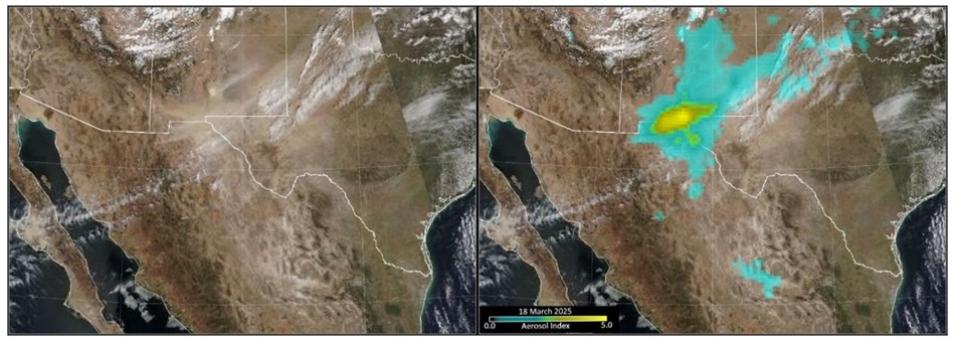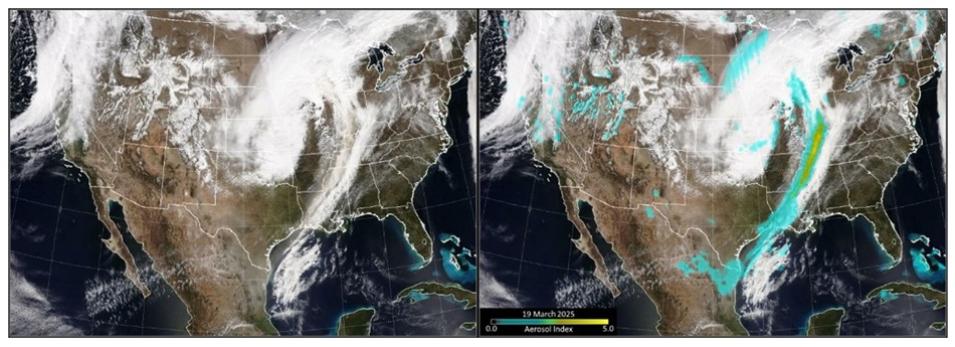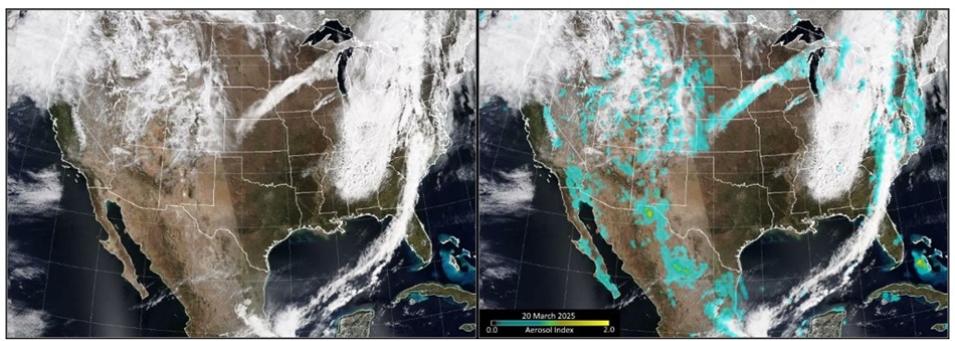Early spring 2025 has been an unusually active period for dust storms over the southwestern United States. These storms have had major impacts locally and across the country all the way to the east coast.
The latest storm began in southern New Mexico and southwest Texas on March 18, 2025, darkening the skies over El Paso and nearby cities, snarling traffic throughout the area. In the figure below, a true-color image from the Visible Infrared Imaging Radiometer Suite (VIIRS) aboard the NOAA 21 platform is shown on the left, while aerosol index (AI) values measured by the Ozone Mapping and Profiler Suite (OMPS) aboard the same platform are overlaid on the right.


